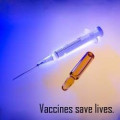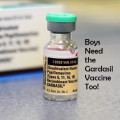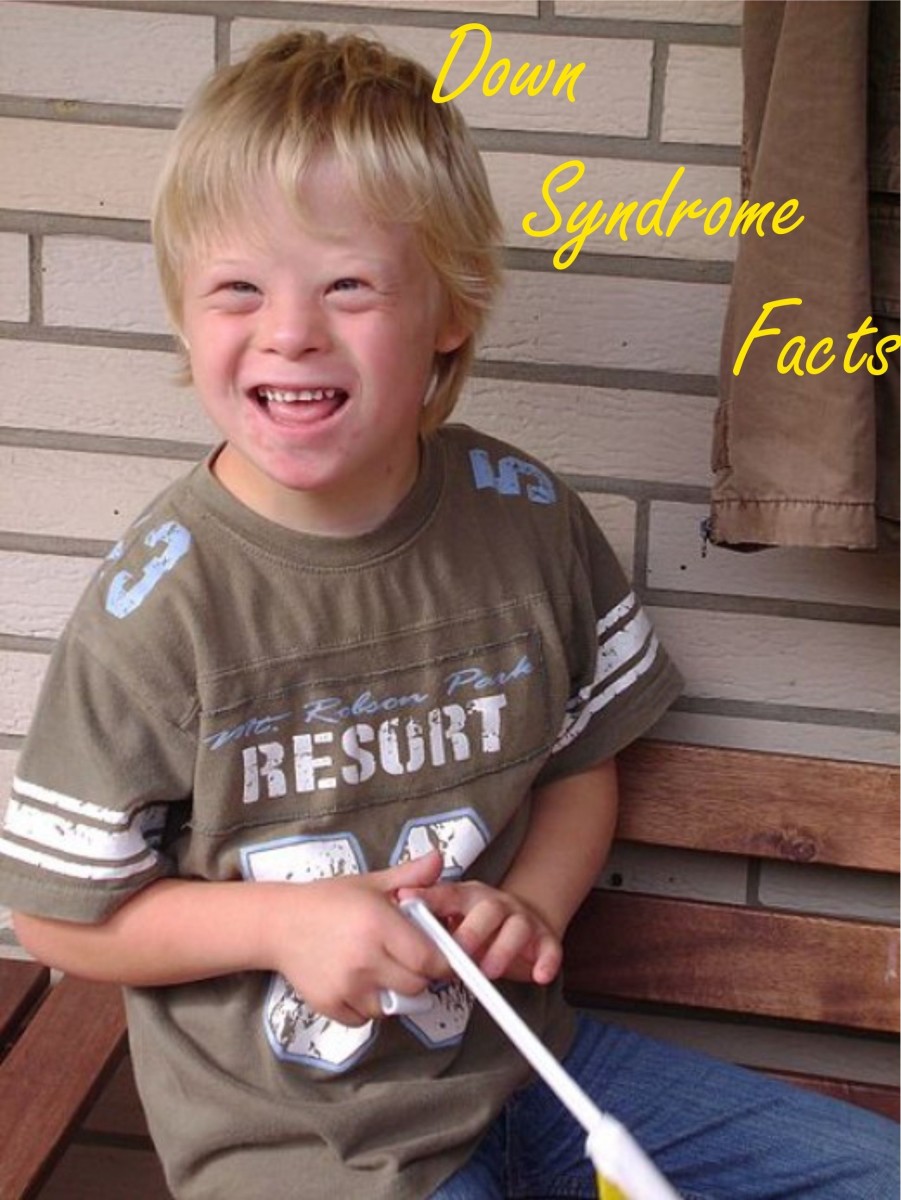Vaccinations: Hurting or Helping?
An Annotated Bibliography
Vaccinations: Hurting or Helping?
Bakalar, Nicholas. "Rich, White and Refusing Vaccinations." The New York Times. The New York Times Company, 24 Dec. 2015. Web. 24 Feb. 2016. This newspaper article discusses a study conducted in California focused on people who opt out of vaccinations due to nonmedical reasons. It states that from 2007 to 2013 vaccine refusal due to personal beliefs has doubled and is now at 3.06 percent. It was determined that more than 17,000 kindergarteners were not vaccinated, and the rate of children not vaccinated was generally higher in areas with higher income, higher education, and mainly white populations. In order to help increase the rates of immunizations in children, the people who are refusing vaccines need to be communicated with effectively without offending them and making them feel like they have to defend their view.
Bernstein, Lenny. "Surgeon General Vivek Murthy Urges Parents to Vaccinate Children Against Measles." The Washington Post. N.p., 4 Feb. 2015. Web. 25 Feb. 2016. In this newspaper article, Surgeon General Vivek Murthy begs parents to have their children vaccinated because the immunizations have been proven safe. He said he understands parent’s concerns, but vaccinations are meant to protect their children, not hurt them. In 2000, measles was declared eliminated in the United States; however, in December of 2014, there was an outbreak of measles in Southern California, where there is an above average number of people who refuse vaccinations. Murthy says that the government has a recommended immunization schedule for children that has been studied extensively and repeatedly determined safe and effective. Measles entered the United States from being carried in from other countries, but according to Murthy, we can protect ourselves and others by simply getting vaccinated.
Campbell, Kristi J. "What Is Your Opinion On Vaccinating Children?" Personal interview. 5 Mar. 2016. I conducted an interview asking a mom of three children about her opinion on vaccinating children. She stated that it was important for her to have her children vaccinated because her main focus was on keeping her children safe from deadly diseases that could harm or even kill them. She also said that she understands why people would have concerns about vaccines, but in her opinion, it was the right decision for her to have her children vaccinated. Finally, she mentioned that she trusts doctors’ advice and knowledge and that is another reason why she felt comfortable having her children vaccinated.
Chen, Robert T., Tom T. Shimabukuro, David B. Martin, Patrick L. F. Zuber, Daniel M. Weibel, and Miriam Sturkenboom. "Enhancing Vaccine Safety Capacity Globally: A Lifecycle Perspective." American Journal of Preventive Medicine 49.6 (2015): 364-76. Web of Science. Web. 5 Mar. 2016. This journal article is discussing what measures can be taken to improve vaccine safety because with national immunizations programs expanding and vaccines resulting in a greater prominence of adverse effects, vaccine controversies and hesitancy is not likely to go away anytime soon. In other words, this article is arguing how to lessen the impact of what controversies could arise in the future with the arrival of more vaccines. This article reviews the childhood immunizations schedule, addresses different concerns and perspectives related to vaccine safety, and discusses how to improve vaccine safety in both developed and low to middle-income countries.
Dube, Eve, Dominique Gagnon, and Noni E. MacDonald. "Strategies Intended to Address Vaccine Hesitancy: Review of Published Reviews." Vaccine 33 (2015): 4191-203. Medline. Web. 20 Feb. 2015. This journal article states that vaccinating children is mostly widely accepted because of the high rates of childhood vaccination in most countries. However, it also suggests that families that do not vaccinate their children tend to live in the same areas, thus increasing the risk of transmitting the diseases they are not protected from. This article reviews different methods of addressing vaccine hesitancy such as interventions, beliefs, attitudes and knowledge, and vaccine review. Different sources that tested these methods are included as well as the results and conclusions. The discussion at the end of the article states that intervention strategies have proven to be promising and should be utilized.
Glanz, Jason M., Sophia R. Newcomer, Michael L. Jackson, Saad B. Omer, Robert A. Bednarczyk, Jo Ann Shoup, Frank DeStefano, and Matthew F. Daley. "White Paper on Studying the Safety of the Childhood Immunization Schedule in the Vaccine Safety Datalink." Vaccine 34 (2016): A1-A29. Web of Science. Web. 20 Feb. 2016. This newspaper article recognizes that while most parents have their children vaccinated, those who are against it or are vaccine hesitant have safety concerns with vaccinating their children. The U.S. Institute of Medicine reviewed existing research to confirm the immunization schedule for children is safe. The article also shows a 4 stage approach for identifying groups of unvaccinated children, a list of possible health outcomes, and various statistical methods to analyze the safety of vaccines. The Vaccine Safety Datalink can be utilized to study the safety of the schedule; however, the studies will be very complex and thorough as to address all of the concerns of the public, especially people who are against vaccines.
Guidry, Jeanine P. D., Kellie Carlyle, Marcus Messner, and Yan Jin. "On Pins and Needles: How Vaccines Are Portrayed on Pinterest." Vaccine 33.39 (2015): 5051-056. Web of Science. Web. 23 Feb. 2016. This scholarly journal article says that while vaccines are a safe and effective way to reduce mortality and morbidity, many parents are following the anti-vaccination movement based off of what health information they find about vaccines on the internet. Because of the significant role the internet plays in people creating their opinions, this study quantitatively analyzes 800 vaccination-related pins, most being anti-vaccination, on the social media site, Pinterest. However, pro-vaccine pins consistently had more interactions than the anti-vaccines pins. Public health organizations and educators should be aware of this and how people communicate about the topic of vaccinating their children.
Kumar, Dewesh, Rahul Chandra, Medha Mathur, Saurabh Samdariya, and Neelesh Kapoor. "Vaccine Hesitancy: Understanding Better to Address Better." Israel Journal of Health Policy Research 5 (2016): 2. Web of Science. Web. 21 Feb. 2016. This scholarly journal article addresses what vaccine hesitancy is and what are possible causes of it among the population. It is recognized that there is a continuum between people being fully accepting of vaccines and being completely against them. Influences such as environmental factors, agent factors, and host specific factors can help explain vaccine hesitancy. The authors break those factors down and explain why each one is important. Finally, the article talks about how to counter vaccine hesitancy such as developing intervention programs, providing updated information to the public, and using social and commercial marketing ideologies. The article also includes figures and tables to help explain the concept of vaccine hesitancy.
Lundgren, Britta. "'Rhyme or Reason?' Saying No to Mass Vaccination: Subjective Re-interpretation in the Context of the A(H1N1) Influenza Pandemic in Sweden 2009-2010." Medical Humanities 41.2 (2015): 107-12. Web of Science. Web. 23 Feb. 2016. This scholarly journal article focuses on the swine flu pandemic of 2009-2010. Swedish citizens were suggested to get the vaccine Pandemrix; however, over 200 young adults and children ended up with a serious side effect which was narcolepsy. This is a factor that influences vaccine hesitancy today. This article examines some written responses to a questionnaire filled out by Swedish people, and it shows how many different circumstances and factors in everyday life influence people’s decisions to get vaccinated. It is stated that interventions about immunizations need to consider the personal experiences and opinions described by the informants in the questionnaires.
Miller, Elizabeth. "Controversies and Challenges of Vaccination: An Interview with Elizabeth Miller." BMC Medicine 13 (2015): n. pag. Web of Science. Web. 6 Mar. 2016. This article comes from an interview found in a journal. Professor Elizabeth Miller is an Epidemiologist and answers several questions related to the controversial topic of vaccinations. Miller address questions asking what health consequences can come from refusing vaccines, how can these risks be communicated, and if vaccinations should be compulsory. There is also a section at the beginning of the article that explains why Professor Miller is certified and trusted to talk about this topic, such as the studies she has conducted and the discoveries she has contributed to. Finally, she addresses whether data from vaccine trials is being reported adequately.
Opel, Douglas J., Kristen A. Feemster, Saad B. Omer, Walter A. Orenstein, Monica Richter, and John D. Lantos. "A 6-Month-Old With Vaccine-Hesitant Parents." Pediatrics 133 (2014): 526-30. Medline. Web. 14 Feb. 2016. This article from a scholarly article addresses what health care providers, such as pediatricians, think about parents refusing to have their children vaccinated. Vaccine-hesitant parents believe that the risks of vaccinating their children greatly outweigh the benefits that can come from immunizations. This journal article gives a scenario of a little baby who is at risk for deadly diseases, but his parents refuse to let the doctors give him any vaccines. After the case is introduced, the article gives the responses and viewpoints of several different doctors and has evidence to support their opinions. Most of the pediatrics agree in saying that they can either keep working with the parents to try to convince them that vaccines are extremely important or suggest to the family that they find another health care provider.
Stein, Richard A. "Vaccination: A Public Health Intervention That Changed History & Is Changing with History." The American Biology Teacher 73.9 (2011): 513-19. BioOne. Web. 20 Feb. 2016. This scholarly journal article introduces that vaccines have eradicated many infectious and deadly diseases such as smallpox, and nearly poliomyelitis and tuberculosis. It is mentioned that there has been a proposed link between vaccinations and autism, but this has been disproven. Finally, although vaccinations used to be created from inactivated pathogens, in more recent years more sensible concepts have been created utilizing an interdisciplinary method of molecular biology, proteomics, genomics, and bioinformatics. There is still not much information known about the immune response to vaccinations, but vaccinology is a dynamic and pulsating field that is making advances more and more frequently.
Tafuri, Silvio, Maria Serena Gallone, Giulia Calabrese, and Cinzia Germinario. "Adverse Events Following Immunization: Is This Time for the Use of WHO Causality Assessment?" Expert Review of Vaccines 14.5 (2015): 625-27. Web of Science. Web. 23 Feb. 2016. This scholarly journal article states that the increased number of parents refusing to have their children vaccinated is due to the antivaccination movements. Behind these movements are the ideas that vaccines are not safe and there is no surveillance of the adverse events that happen after immunizations. This article thoroughly analyzes the use of the adverse events following immunizations (AEFI) test that is used among health care professionals and health researchers. The WHO published an assessment for serious AEFI that can be used by national immunization programs, surveillance departments, and regulatory authorities. The last update was published in March 2013.
Vanderhoff, Gerald. Doll Represents How Many Vaccines a Child Receives By Age 2. 2016. Pinterest. Pinterest. Web. 5 Mar. 2016. This picture comes from a social media site that often contains information on controversial topics. This is a picture of a baby doll that has many shots stuck in it; it is supposed to represent the number of vaccines a baby receives before they are two years old. The picture is originally supposed to be an anti-vaccination post, but there are comments underneath it that oppose this viewpoint. The comments state that vaccines are what keep children safe and that they are the reason people have not gotten Polio; also, it says that if you grouped two years’ worth of anything around a baby it would look scary as well.
Van Vlaenderen, Ilse, Laure-Anne Van Bellinghen, Genevieve Meier, and Barbara Poulsen Nautrup. "An Approximation of Herd Effect Due to Vaccinating Children Against Seasonal Influenza – A Potential Solution to the Incorporation of Indirect Effects into Static Models." BMC Infectious Diseases 13 (2013): 25. Medline. Web. 14 Feb. 2016. This information comes from a scholarly journal and addresses what the herd effect and herd community is. The herd effect refers to a form of indirect protection from infectious diseases that occurs when a large percent of a population becomes immune to a certain infection, thus protection everyone that is not immune. A study is conducted in this article to find an approach to allow the herd effect connected with vaccinating children against influenza can help determine the cost-effectiveness of the influenza vaccine. The study concludes that there is a linear relationship between the effective coverage and decrease in risk of infection.







